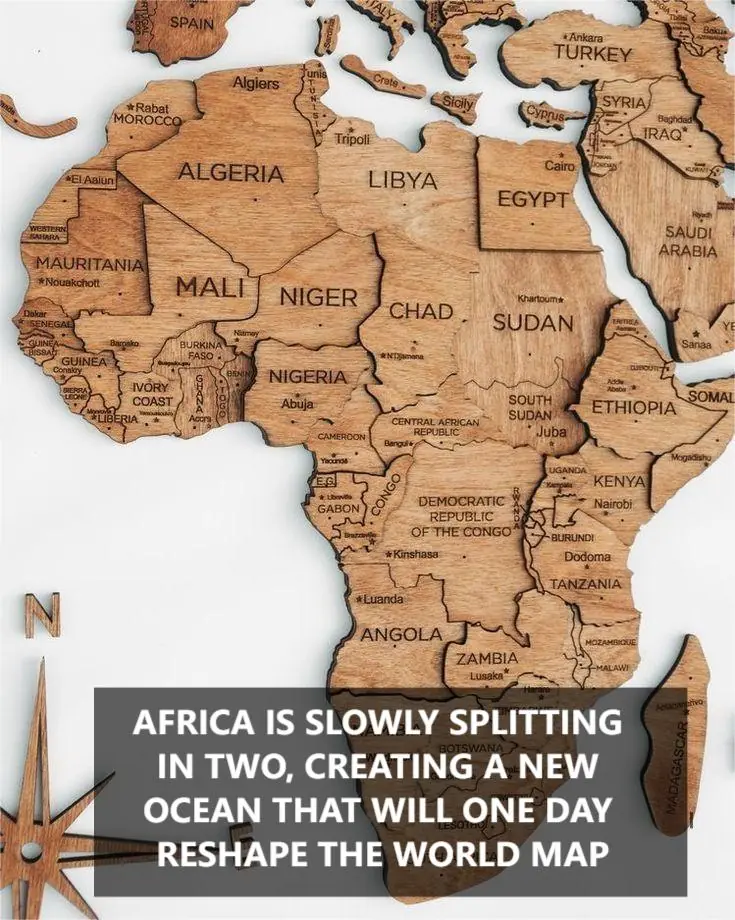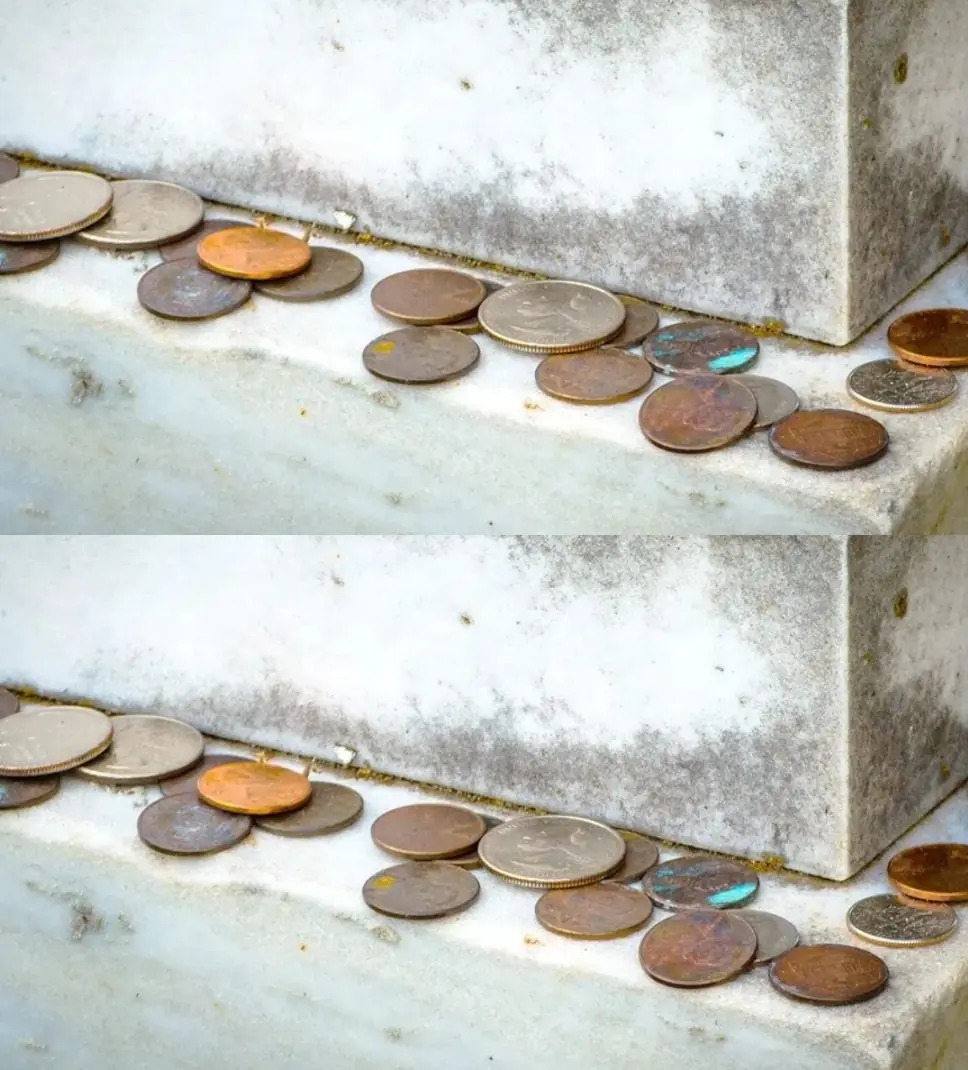
The Great Rift: How Africa is Slowly Splitting to Form a New Ocean

Africa’s Great Rift: The Continent Slowly Splitting to Form a New Ocean
Africa is undergoing one of the most remarkable geological transformations on Earth. Along the East African Rift System, a vast crack is gradually widening across Ethiopia, Kenya, and Tanzania. Though the shift measures only a few centimeters each year, it represents a process that will, over millions of years, reshape the continent and alter the world map.
A Continent in Motion
The Earth’s crust is not fixed and unchanging—it is composed of tectonic plates that float on a semi-molten mantle deep below the surface. These plates are constantly moving, colliding, and drifting apart. In East Africa, the tectonic forces are pulling the landmass apart, slowly dividing it into two distinct pieces.
The East African Rift is considered the birthplace of a future ocean. As the rift expands, water will eventually flood the valley, carving out new coastlines and giving rise to an ocean basin. It is the same natural process that millions of years ago created the Red Sea and, even further back, the Atlantic Ocean.
The Future Shape of Africa
Although these changes will unfold over an immense timescale, scientists can already predict how the continent may look millions of years from now:
-
A New Ocean: The rift will widen into a vast sea, separating eastern Africa from the rest of the continent.
-
A New Landmass: Countries such as Ethiopia, Kenya, Tanzania, and neighboring regions will eventually split off, forming a giant island-like landmass.
-
Reshaped Ecosystems: Rivers, coastlines, and habitats will be transformed, forcing both wildlife and human populations to adapt to new landscapes.
Human and Environmental Impact
For now, the rifting poses little direct threat to human settlements. But in the distant future, this process will profoundly influence ecosystems, climates, and civilizations. Entirely new marine environments will emerge, and societies thousands or millions of years from now will inhabit a very different Africa.
For scientists, the East African Rift serves as a natural laboratory. It offers a rare chance to study the early stages of continental breakup—insights that help us understand not only Africa’s future but also the geological history of all continents.
A Living, Restless Planet
This slow-motion transformation is a vivid reminder that Earth is a dynamic and living planet. What feels solid beneath our feet is constantly in flux, shifting and reshaping itself, even if most changes remain invisible within a human lifetime.
One day, where valleys and mountains now lie, future generations may stand on the shores of a brand-new ocean. Africa’s Great Rift is not just a crack in the ground—it is a window into Earth’s evolving story, showing us that the planet we call home is always, quietly, on the move.
News in the same category


From Despair to Mobility: Rescued Husky Vova Triumphs Against Adversity with New Wheels

Wife Diagnosed with Terminal Cancer Due to Her Husband’s Habit

She Thought She Saw A Happy Bird In The Woods, Then Suddenly Realizes Her Mistake

‘Zombie Squirrels’ with oozing flesh terrify U.S. homeowners

Celestial Jewelry: Moon Meets the Seven Sisters at Dawn

Tourist’s Selfie Stunt Turns Into Terrifying Crocodile Attack in the Philippines

The Hidden Power of Outdoor Play: How One Hour a Day Shapes Young Minds

Music and the Mind: How Playing Tunes to Babies Boosts Early Brain Development

People with green eyes are special for these reasons with…

Meaning Behind the Tradition of Coins on Gravestones

Japan’s Tooth Regrowth Drug: Dental Health Revolution!

Resilient Dog Overcomes Neglect and Thrives, Inspiring Change in Animal Welfare

9-year-old dies 10 minutes after posing with this note: Police soon discover terrible mistake that killed her

Witnesses speak out after passenger 'sliced open' as waterslide breaks on world's biggest cruise ship

Three beachgoers dead after sea mines wash up on beach and explode at popular tourist spot

Mom explains why she doesn’t regret giving her daughter’s pony to zoo to become lion food

Netflix is losing 91% rated series that's ‘better the second time’ and you can binge in one day
News Post

The Benefits of Onion 🧅

A Week of Refreshing Smoothies: Daily Recipes for Health and Energy

THE REASON WHY YOU SHOULD DRINK WATER EVERY DAY 👇

Detox Green Juice: Cucumber, Green Apple, and Chayote

Simple Technique to Say Goodbye to Lower Back Pain and Sciatica

Homemade Rice Water: the natural toner your skin (and hair) will love 💧

Nut & Cream Layered Cake

🍫 Heart-Shaped Chocolate Mille-Feuille Cake Recipe

Chocolate Hazelnut Mille-Feuille (Napoleon) Recipe

The Horse Who Changed Everything

Shelter Dog Extends Paw Through Kennel Bars, Longing for Love and a Home

From Despair to Mobility: Rescued Husky Vova Triumphs Against Adversity with New Wheels

Lonely Dog Escapes Yard Just to Hug His Best Friend

Miracle Leaf of Life: Unlock Radiant Skin and Vibrant Health

Morel Mushrooms: Nature’s Culinary Treasure for Vibrant Health and Flavor

Why Do Your Feet Itch at Night? Simple Causes and Effective Solutions

Lemon Slice: Unlock Soft, Pink Lips Naturally

Unveil Radiant Skin in Just 5 Minutes with the Tomato Coffee Scrub

Unlock the Hidden Power of Onions: Your Secret Weapon for Vitality After 50
